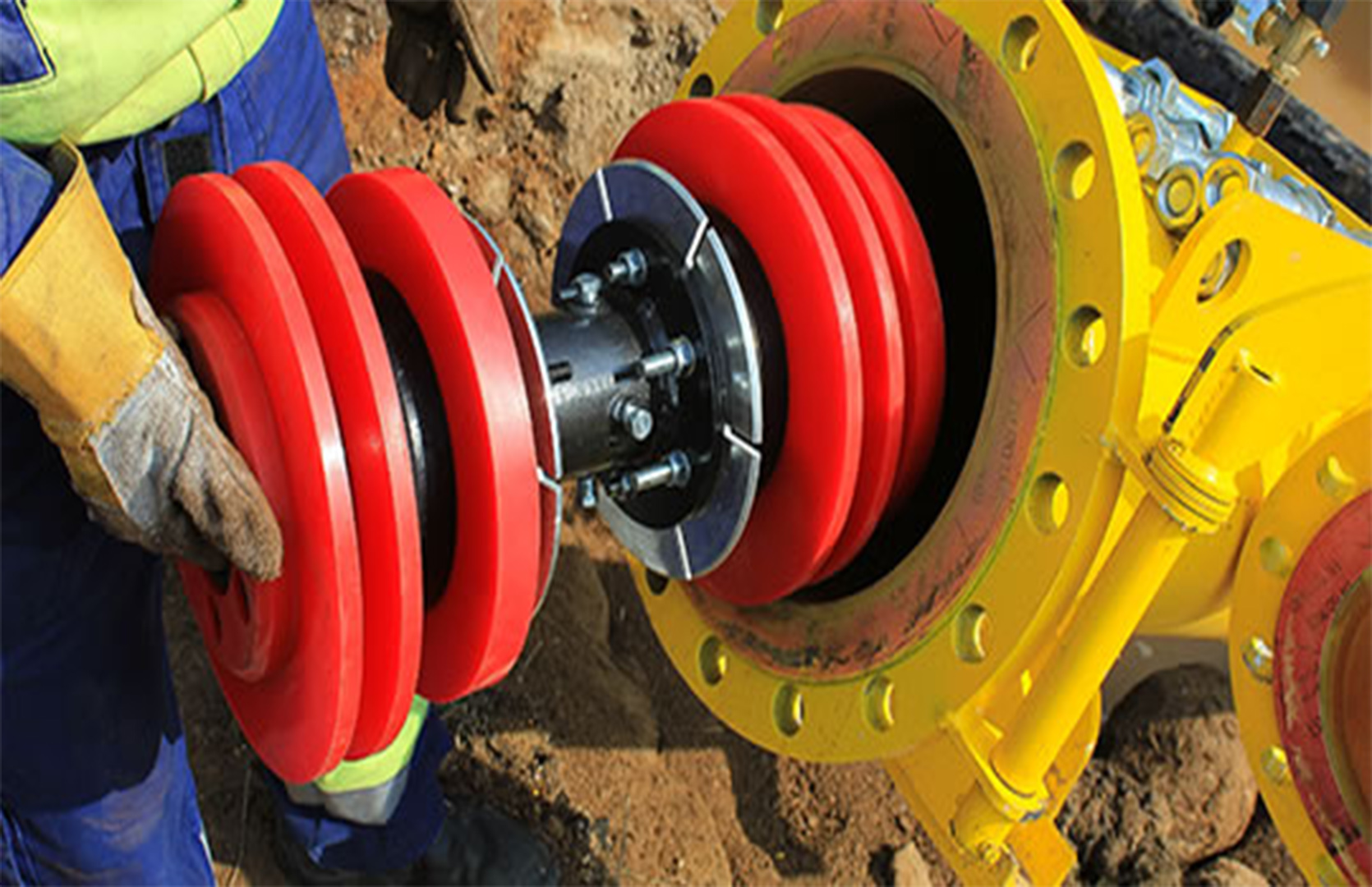
Pipeline Cleaning
1- Manar Al-Aswar Company Pipeline Mechanical Cleaning(Pig Campaign)

Manar Al-Aswar Company Group tailored cleaning pigs for black powder with state-of-the-art built-in bypass inside of cleaning pigs A typical cleaning pig consists of several sealing elements, a metallic body, spring loaded brushes and magnets in case of request. Sealing elements are the most important part of a cleaning pig which provide sealing as well as object removal from the pipeline. Selection of proper cleaning pig for a pipe is based on type of expected debris and objects to be cleaned. 1- Pig elements array 2- Geometry (diameter, length, thickness, assembling concerns, Repair concerns) 3- Material Design Criteria (our added value): - DP for running the pig (bigger DP, more aggressive, better) Lengthy pipeline, DP lost because of friction, DP limitations for BVS ESD concern, shock, wave to ESD, Erosion simulation - Maximum Stress - Maximum wear - Bending stiffness (Bend over debris, common problem in many designs) - Normal force between brush and pipe wall (if we have brushes) - Magnetic force (for Magnetic pigs -only for gas pipelines-) - Rotating of Pig, By-pass ports, etc. Reviewing the pipeline data including Size, length, schedule, bends, type of fluid, flow rate, working pressure, expected debris, Selecting proper sealing elements type (cups and/or discs) based on pipeline length, contact stress, pigging velocity and available material (several hardnesses). This step needs simulation and optimization. Designing guide disc and Sealing disc (thickness, outer diameter, flange diameter) based on maximum bending stiffness while considering wear limits. This step needs simulation and optimization. Designing assembly dimensions (space between cups, discs) Designing the metal body geometry based on buckling limits, strength. Weld design on metallic body. Te main function of the pit boss brush is to remove the debris and sediment from inside of pitting and general corrosions on internal pipe wall. •Its diameter is 1-2% larger from the internal diameter of the pipe. •The needle material is stainless steel, AISI 304, while the flange and body are carbon steel. •There is no simulation on pit boss brush function in ABAQUS
2- Manar Al-Aswar Company Black Powder Cleaning/Removal Solutions

Black Powder is an abrasive contamination mainly consisting of iron sulfide, iron oxide and silica. Black Powder is a globally pervasive problem that originates from reservoir formations and from corrosion and erosion of pipelines and tank farms. Black Powder causes unplanned costly operational breakdowns and major equipment failures from the wellhead to the consumer. Manar Al-Aswar Company is a global integrated solutions provider with patented world leading sustainable technology for managing Black Powder contamination. Manar Al-Aswar Company Group utilizes proven results driven Cleaning/Separation technology deployed within the Black Powder for 16 + years in global markets
Internal Corrosion direct assessment (ICDA)
Our team of internal corrosion experts provide comprehensive solutions for internal pipeline integrity. These services cover initial corrosion assessment and testing, design and planning of mitigation programs and measurement of the efficacy of corrosion control efforts. Starting with internal corrosion direct assessment (ICDA) to identify maximum risk locations, the control of internal corrosion in pipelines is optimized by one or more of the following activities: • Pipeline system evaluation and assessment • Engineering calculations
◦ Prediction of corrosivity • Laboratory analysis of gas, liquids and solids • Microbiologically influenced corrosion (MIC) testing, studies and evaluation • Corrosion monitoring ◦ Coupons ◦ Probes ◦ NDT (nondestructive testing, in-line inspection, ultrasonic) • Cleaning pig programs • Application of inhibitors and bacteriacides
3- Manar Al-Aswar Company Pipeline Chemical Cleaning Management

The Manar Al-Aswar Company in cooperation with PureChem facility sits on 20 acres of land right next door to Moose Mountain Mud and Equal Trucking. The 22,000 ft2 state of the art blending facility contains 5 mixing vessels which are fed by 10 storage tanks right outside the building. The facility boasts a production capacity of 1.5 million litres per month. There is a full laboratory on site for developing new blends, analysis and quality control. In 2013 an acid blend and storage component was added to the facility with a storage capacity of 200m3 and blending vessels on site to build specialized acid blends. PureChem blends and develops almost all liquid drilling fluid products consumed by Moose Mountain Mud and CES. Each batch is precisely blended • Raw materials are weighed or metered Uniformly mixed • Quality Control Tested to Ensure Consistency • Correct Amount to Container Blending includes • Water-, solvent- or oil-based liquids Alkaline, neutral or acidic products Powdered mixtures • Wide range of viscosities Identified by product name Batch numbered and dated Rigorously tested and QC data recorded Adjustments made if required Retains kept forat least 6 months (12 months at PureChem) Field conditions are simulated in the laboratory in performing the following analyses: Complete oil analysis Complete water analysis Demulsifier bottle testing Wax analysis Scale analysis Corrosion inhibitor evaluation Residual tracking We can design custom systems if one of our standardized units does not meet your requirements. Our service typically spans the entire life of the project and includes; Initial system sizing Budgetary estimates Engineered design System HAZOP assessment Project management of equipment fabrication

